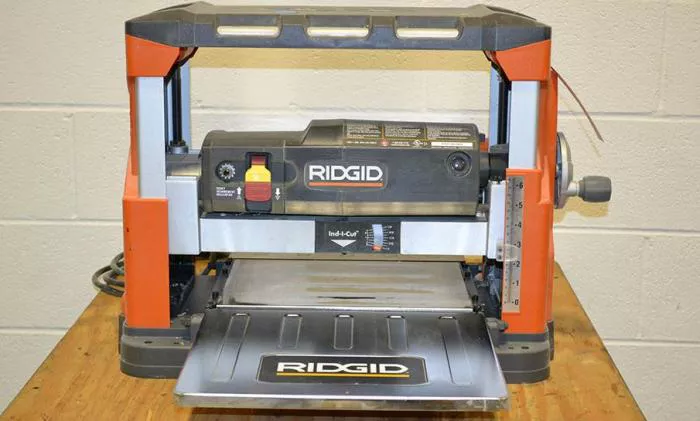A thickness planer is an indispensable tool for any serious woodworking enthusiast. This powerful machine serves the primary function of reducing stock to a precise thickness while creating parallel surfaces. Unlike jointers that only flatten one face, thickness planers ensure both faces of a board become perfectly parallel to each other at your desired dimension.
The working principle involves feeding wood through rotating cutterheads equipped with sharp blades that remove thin layers of material. Modern thickness planers incorporate advanced features like helical cutterheads, digital readouts, and dust collection systems that significantly enhance their performance and user experience.
Critical Considerations When Choosing a Home Thickness Planer
Workspace requirements demand careful evaluation before purchasing a thickness planer. Benchtop models offer excellent portability for limited spaces, while stationary units provide greater stability for frequent use. The available floor space in your workshop will largely determine which form factor makes the most sense.
Motor power directly influences performance capabilities. Most home workshop models range from 13-15 amps, with 15 amp motors handling harder woods more effectively. Consider the types of wood you typically work with – softwoods require less power than dense hardwoods like maple or oak.
Cutting width determines the maximum board size you can process. Common sizes for home workshops include 12.5-inch and 13-inch models, with wider 15-inch options available for more ambitious projects. Remember that the actual cutting width is typically about 1/4-inch less than the stated size.
Advanced Features That Enhance Planer Performance
Helical cutterhead technology represents a significant advancement in planer design. Unlike traditional straight knives, these feature multiple small carbide cutters arranged in a spiral pattern. The benefits include quieter operation, reduced tear-out, and the ability to replace individual cutters rather than entire blades.
Dust collection efficiency has become a crucial factor in modern workshops. Look for models with well-designed chip ejection systems and 4-inch dust ports that connect to standard shop vacuums or dust collectors. Effective chip removal prevents buildup that can affect finish quality.
Depth adjustment mechanisms vary between models, with some offering precise digital readouts while others use traditional dial indicators. Consider how important precision measurements are for your projects when evaluating this feature.
Advantages of Using a Planer:
Uniform Thickness: A planer excels at creating boards with consistent thickness, especially useful for thicknessing rough or uneven lumber.
Speed: Planers are generally faster than jointers when it comes to processing large batches of lumber or achieving uniform thickness across multiple boards.
Versatility: Planers can handle various types of wood, from softwoods to hardwoods, and can work with a wide range of board sizes.
Maintenance Practices for Optimal Planer Longevity
Blade maintenance forms the cornerstone of thickness planer upkeep. Traditional straight knives require regular sharpening or replacement, typically after 8-10 hours of use on hardwoods. Keeping spare blades on hand ensures uninterrupted workflow when maintenance becomes necessary.
Proper lubrication of moving parts prevents premature wear on critical components. Follow the manufacturer’s recommendations for lubricating the gearbox, chains, and other mechanical elements. Using the wrong lubricant can cause more harm than good.
Alignment checks should be performed periodically to ensure parallel cutterhead to table relationships. Misalignment leads to tapered boards and uneven thickness. Many modern planers include adjustment mechanisms for correcting these issues.
Safety Protocols for Thickness Planer Operation
Hearing and eye protection are non-negotiable when operating any power tool, especially loud equipment like thickness planers. Consider using noise-reducing headphones and always wear safety glasses to protect against flying debris.
Proper feeding techniques involve maintaining steady pressure throughout the cut without forcing the material. Let the machine’s feed rollers do their job, and never stand directly behind the board being planed to avoid potential kickback injuries.
Dust management goes beyond shop cleanliness – wood dust poses serious health risks with prolonged exposure. Always use connected dust collection and consider wearing a respirator for extended planing sessions.
Conclusion
Selecting the ideal thickness planer for your home workshop requires careful consideration of your specific needs, workspace limitations, and project requirements. By understanding the critical features, maintenance requirements, and safety considerations outlined in this guide, you’ll be equipped to make an informed decision that will serve your woodworking needs for years to come. Remember that investing in quality tools always pays dividends in the long run through superior results and reduced frustration. The right thickness planer becomes not just a tool, but a trusted partner in bringing your creative visions to life with precision and efficiency.
Relate topics:
- Planer vs. Jointer: Understanding the Differences and Choosing the Right Tool
- Top Dewalt Planers Compared: Which Model Offers the Best Value?
- Is the DeWalt DW735 Worth the Investment? A Comprehensive Evaluation

